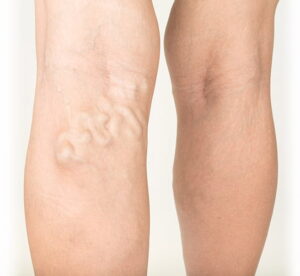Varicose veins can be harder to see on dark skin, but they can still cause skin discoloration, swelling, and other symptoms. In people with darker skin, the veins might appear dark brown, purple, or grey and may not be as visibly prominent. Skin discoloration due to varicose veins can present as a darkening or browning of the skin, sometimes described as a rusty or black appearance.

Key points about varicose veins and dark skin:
The pigmentation in darker skin can make it harder to initially spot varicose veins and their associated skin changes.
Varicose veins can lead to hyperpigmentation (darkening) of the skin, particularly around the ankles and lower legs.
Beyond discoloration, symptoms can include swelling, pain, itching, and skin that feels dry, tight, or hardened.
If left untreated, varicose veins can lead to complications such as venous ulcers.
It’s important to seek medical advice if you experience any symptoms of varicose veins, especially if you notice skin changes.
How varicose veins can affect the skin:
Damaged valves in the veins cause blood to pool and increase pressure, leading to inflammation.
This increased pressure can cause red blood cells to leak out of the veins and into the surrounding tissues.
As the red blood cells break down, they release iron pigments (hemosiderin), which can stain the skin, causing discoloration.
Over time, this can lead to skin that is darker, drier, and more prone to breakdown or ulceration.
Treatment and prevention:
Regular exercise, maintaining a healthy weight, elevating the legs, and avoiding prolonged standing or sitting can help improve circulation and reduce symptoms.
Wearing compression stockings can help support the veins and improve blood flow.
Various procedures, such as sclerotherapy or endovenous ablation, can be used to treat varicose veins.